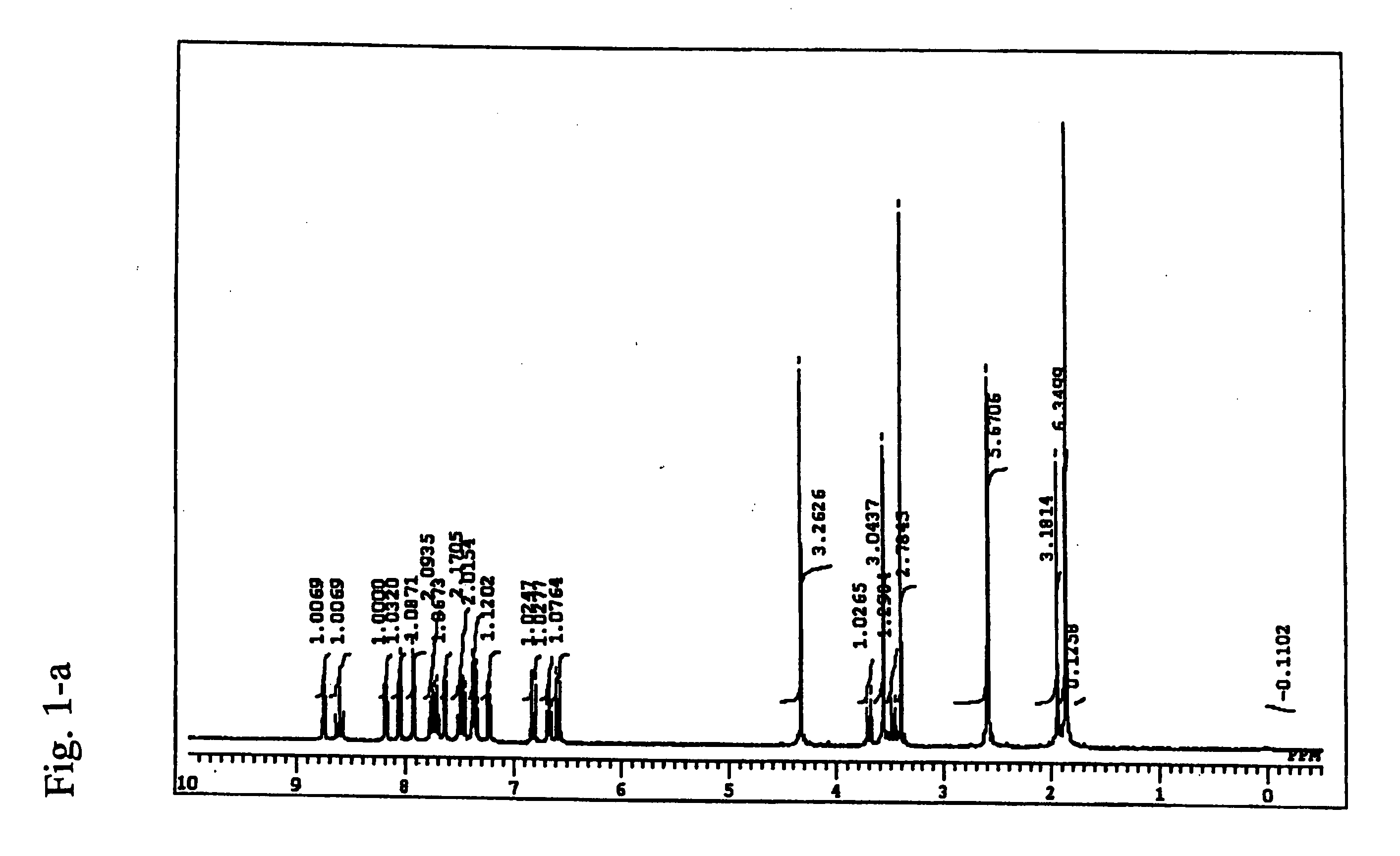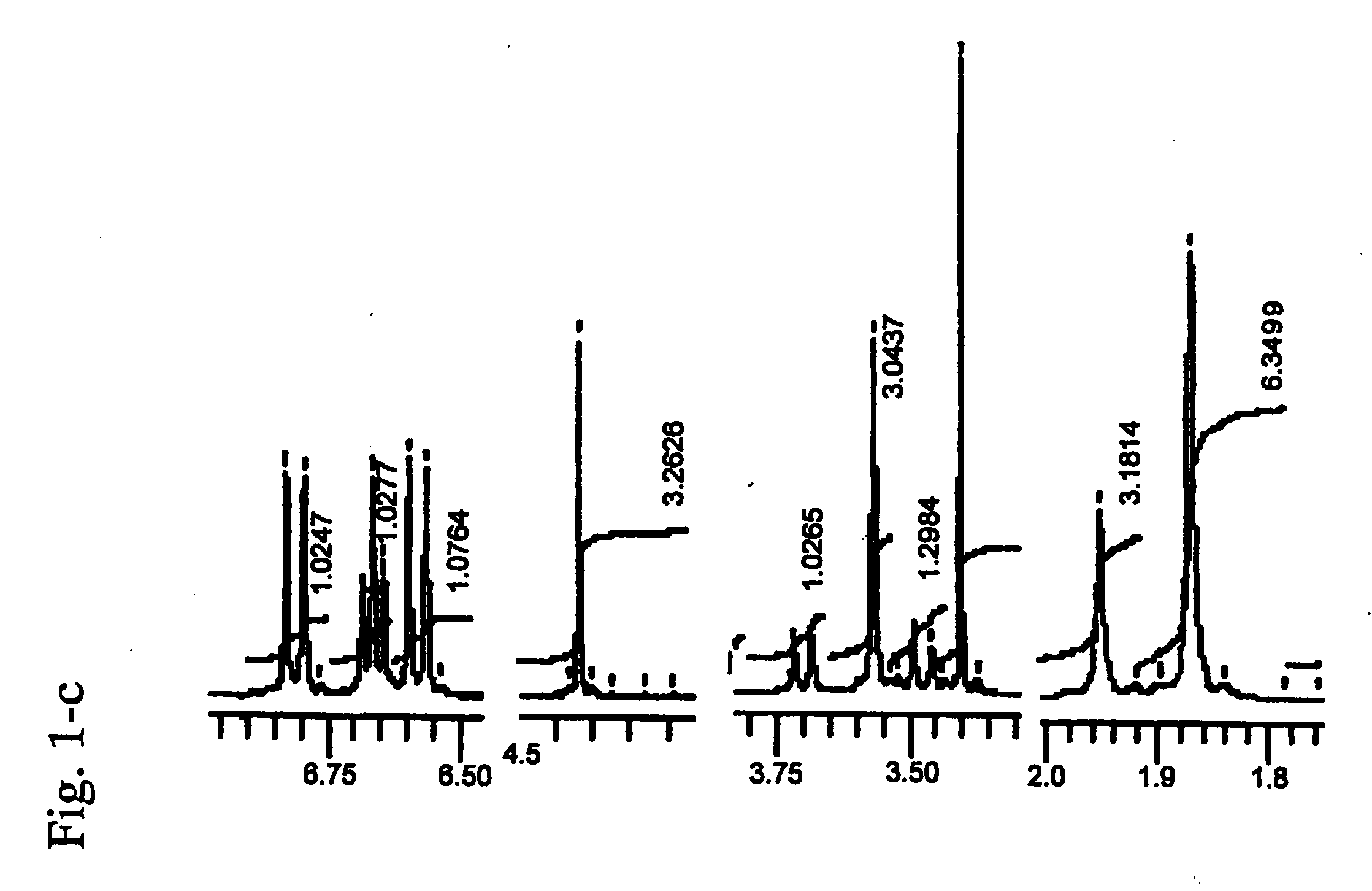Cyanine compound, optical recording material, and optical recording medium
a technology of cyanine compound and optical recording medium, applied in the field of cyanine compound, can solve the problem of no compound available that shows thermal decomposition behavior
- Summary
- Abstract
- Description
- Claims
- Application Information
AI Technical Summary
Benefits of technology
Problems solved by technology
Method used
Image
Examples
preparation example 1
Synthesis of Tetrafluoroborate of Compound No. 3:
a) Preparation of Indole Derivative
In a reaction flask were put 24.4 g of N-methyl-N-phenylhydrazine, 58.8 g of 4-(2-fluoro-4-bromophenyl)butan-2-one, and 100 g of ethanol and stirred at 70° C. for 1 hour. To the reaction mixture was added dropwise 25 g of a 35 wt % hydrochloric acid aqueous solution at 70° C., followed by allowing the mixture to react at 80° C. for 1 hour. After cooling to room temperature, 100 g of toluene was added, and the mixture was washed with three 150 g portions of water and dried over anhydrous sodium sulfate. The resulting solution was freed of the solvent, and the residue was recrystallized from 70 g of ethanol. The crystals were washed with ethanol and dried in vacuo at 80° C. for 2 hours to give. 40.0 g (yield: 60.2%) of an indole derivative having a substituted benzyl group as white crystals.
b) Synthesis of Intermediate Compound
In an autoclave were put 33.2 g of the indole derivative prepared i...
preparation example 2
Synthesis of Perchlorate of Compound No. 20:
a) Preparation of Indole Derivative
In a reaction flask were put 34.4 g of N-methyl-N-naphthylhydrazine, 42.5 g of 4-(4-cyanophenyl)butan-2-one, and 93 g of ethanol, followed by stirring at 70° C. for 1 hour. To the reaction mixture was added dropwise 25 g of a 35 wt % hydrochloric acid aqueous solution at 70° C., and the mixture was allowed to react at 80° C. for 1 hour. After cooling the reaction mixture to room temperature, 100 g of toluene was added thereto. The mixture was washed with three 150 g portions of water and dried over anhydrous sodium sulfate. The solvent was removed, and the residue was recrystallized from 70 g of ethanol. The crystals were washed with ethanol and dried in vacuo at 80° C. for 2 hours to give 35.0 g (yield: 56.4%) of an indole derivative having a substituted benzyl group as white crystals.
b) Preparation of Intermediate Compound
In an autoclave were put 31.0 g of the indole derivative obtained in (a) ...
preparation example 3
a) Preparation of Indole Derivative
In a reaction flask were put 34.4 g of N-methyl-N-naphthylhydrazine, 38.9 g of 4-(2-methylphenyl)butan-2-one, and 90 g of ethanol and stirred at 70° C. for 1 hour. To the reaction mixture was added dropwise 25 g of a 35 wt % hydrochloric acid aqueous solution at 70° C., followed by allowing the mixture to react at 80° C. for 1 hour. After cooling to room temperature, 100 g of toluene was added, and the mixture was washed with three 150 g portions of water and dried over anhydrous sodium sulfate. The resulting solution was freed of the solvent, and the residue was recrystallized from 70 g of ethanol. The crystals were washed with ethanol and dried in vacuo at 80° C. for 2 hours to give 38.1 g (yield: 63.5%) of an indole derivative having a substituted benzyl group as white crystals.
b) Preparation of Intermediate Compound
In an autoclave were put 29.9 g of the indole derivative prepared in (a) above, 17.0 g of methyl iodide, and 66.2 g of metha...
PUM
| Property | Measurement | Unit |
|---|---|---|
| absorption peak wavelength | aaaaa | aaaaa |
| absorption peak wavelength | aaaaa | aaaaa |
| absorption peak wavelength | aaaaa | aaaaa |
Abstract
Description
Claims
Application Information
 Login to View More
Login to View More - R&D
- Intellectual Property
- Life Sciences
- Materials
- Tech Scout
- Unparalleled Data Quality
- Higher Quality Content
- 60% Fewer Hallucinations
Browse by: Latest US Patents, China's latest patents, Technical Efficacy Thesaurus, Application Domain, Technology Topic, Popular Technical Reports.
© 2025 PatSnap. All rights reserved.Legal|Privacy policy|Modern Slavery Act Transparency Statement|Sitemap|About US| Contact US: help@patsnap.com



